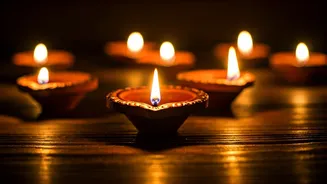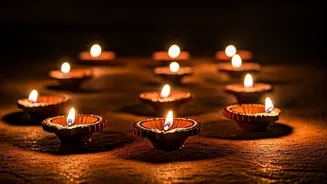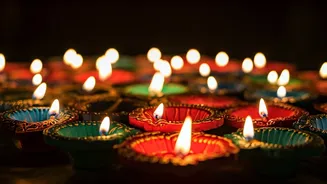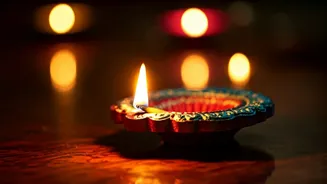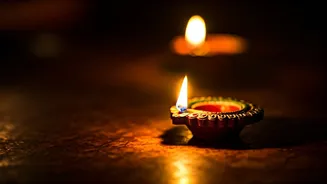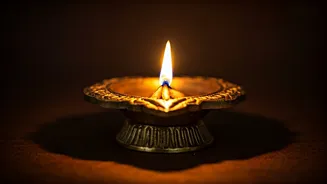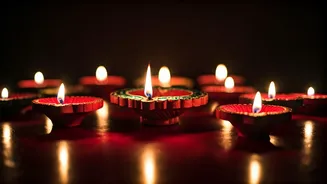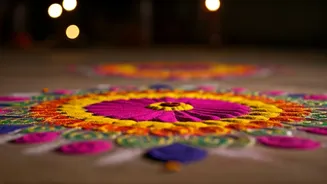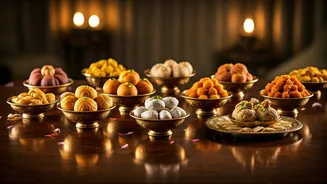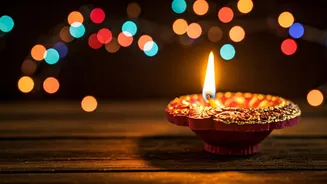Diyas: More Than Light
Diyas hold a pivotal role in the Diwali celebrations, going beyond mere decoration. They serve as a powerful symbol, representing the inner light that
dispels negativity and ignorance. The practice of lighting diyas is not a recent custom; it is a tradition deeply rooted in Indian culture. Historically, clay diyas were used, and their flickering flames were seen as a way to invite divine blessings and ward off evil. Each diya is a small offering of light, contributing to the overall festive spirit of Diwali. The placement of these lamps throughout homes and temples serves as a visual reminder of the victory of light over darkness, good over evil, and knowledge over ignorance.
Variety of Designs
Diyas come in various designs, offering a wide array of choices for Diwali decorations. The most traditional diyas are made of clay and are simple in design. These clay diyas often appear in a simple bowl shape. However, in modern times, artisans have created diyas in different materials, shapes, and sizes. They are often painted with vibrant colors or adorned with intricate patterns. Some diyas feature the images of deities such as Lakshmi and Ganesha, adding a religious element. You can find diyas shaped like flowers, animals, and other festive motifs. The variety of designs ensures that there is a perfect diya to suit everyone's aesthetic preferences and complement their home décor.
Lighting & Placement
The art of lighting and placing diyas is as important as the design itself. Traditionally, diyas are filled with oil or ghee, and a cotton wick is placed inside to be lit. The positioning of diyas is very significant in the celebrations. Diyas are often placed along the thresholds of homes, on windowsills, balconies, and near the entrances to welcome prosperity and good fortune. They are also arranged around the home altars or temples, adding to the atmosphere of worship. The number of diyas lit during Diwali varies, but the more the merrier is a common sentiment. Every lit diya symbolizes the spreading of positivity and dispelling the darkness of ignorance.
Diyas and Traditions
Diyas are integral to various Diwali rituals, adding cultural depth to the festivities. During Diwali, families often perform a Lakshmi Puja to welcome the goddess of wealth and prosperity into their homes. The lighting of diyas is a crucial part of this puja, symbolizing the welcoming of light and good fortune. Furthermore, the light from diyas is considered sacred and is believed to have a purifying effect. The practice of lighting diyas is usually coupled with the exchange of gifts and sweets. This strengthens the bonds between family members and friends. The warmth and glow of the diyas foster a sense of togetherness and celebration during this auspicious time.
Modern Adaptations
While traditional clay diyas remain popular, contemporary Diwali celebrations have seen modern adaptations. People now choose to use diyas made from materials like glass, metal, and even eco-friendly materials. One innovative adaptation is the use of floating diyas. They are placed in bowls of water and add a unique charm to the decorations. Some diyas use LED lights, offering a safer alternative to traditional oil lamps, especially in homes with children or pets. These LED diyas often mimic the flickering effect of a real flame. No matter the type, the essence of the diya remains the same: a symbol of light, hope, and the joyous spirit of Diwali.
